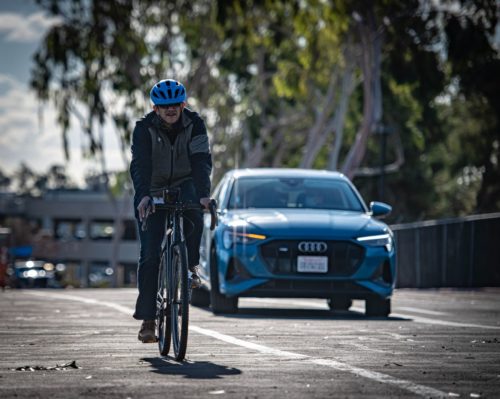
By The Numbers
NHTSA and the U.S. Department of Transportation offer 10 years of data showing U.S. traffic crash outcomes for pedal-cyclists worsened from 2012 to 2021: deaths were up 31.6 percent (from 734 to 966), while injuries were down 15.6 percent (from 49,300 to 41,615). As defined by NHTSA in its 2021 report, pedal-cyclists are bicyclists and other cyclists, including riders of two-wheel, nonmotorized vehicles, tricycles, and unicycles powered solely by pedals.
All told, a yearly average of 49,000 pedal-cyclists were killed or injured in traffic crashes in the U.S. during the time period measured, an alarming number given the progress of ADAS and other road safety technologies designed to prevent loss of life and injury.
Location & Times
Even more concerning, according to the Centers for Disease Control and Prevention, bicycles make up only one percent of all trips in the U.S. but account for over two percent of all traffic fatalities. The USDOT called the situation a “crisis of roadway deaths” in a late October 2023 news release.
In an analysis of 2021 U.S. pedal-cyclist fatalities, NHTSA and the USDOT found 85 percent occurred in urban areas, whereas 15 percent occurred in rural areas. 62 percent did not occur at intersections, while 29 percent did. 52 percent happened when it was dark, compared to 44 percent in daylight.
Unsurprisingly, 61 percent occurred on weekdays, when more people are commuting to and from work and school, while 39 percent occurred on weekends. Florida, California, and Texas had the most fatalities, while South Dakota, Vermont, West Virginia, and Wyoming reported none.
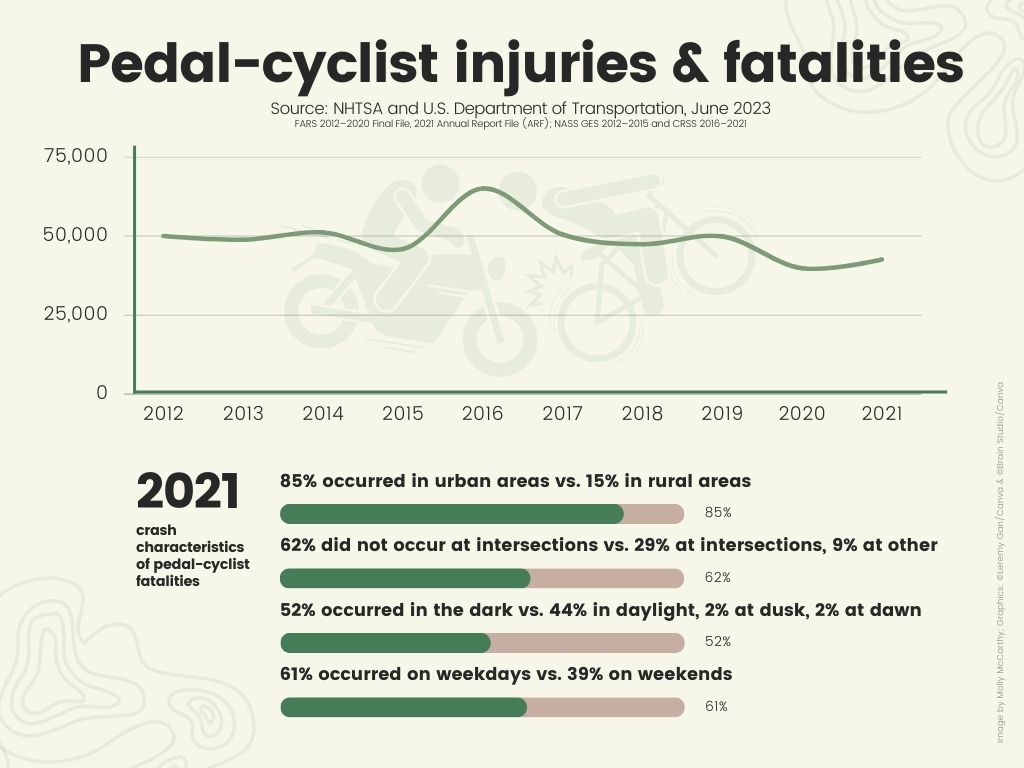
Coalition for Cyclist Safety
The recently announced Coalition for Cyclist Safety, a collaboration of 19 innovators in the bicycle, automotive, and technology sectors, hopes to improve these statistics. Founding members from automotive and cycling include Audi, Cariad, Bicycle – Accell, AT-Zweirad, BMC, Bosch eBike Systems, Koninklijke Gazelle, Shimano, and Trek Bicycle Corp. Together with technology and telecommunication providers, they intend to develop a comprehensive approach to bicycle safety centered on deployments of cellular vehicle-to-everything technology (or C-V2X for short).
C-V2X makes it possible for vehicles to communicate or transmit data not only with each other but also with infrastructure, providing alerts and warnings. Importantly, it uses cellular networks over other techniques to do so. Proponents view C-V2X as key to developing smart cities and autonomous vehicles, offering improved road safety, reduced traffic congestion, and a better driving experience.
“V2X is another important contribution to safer cycling since it could give cyclists digital visibility for other road users,” said Claus Fleischer, CEO of Robert Bosch GmbH’s Bosch eBike Systems division. “However, this cannot be achieved by one company alone – it requires the cooperation of various players working on the topic across the board so that in the future, no road user is excluded from the benefits V2X can provide.”
Audi & C-V2X Applications
Coalition for Cyclist Safety member Audi started developing C-V2X technology in 2020 after the U.S. Federal Communications Commission agreed to allocate a portion of its 5.9 GHz cellular band for C-V2X applications. The ruling allows C-V2X to host standardized communications between vehicles and infrastructure.
By late September 2020, Audi of America, American Tower Corporation, Qualcomm Technologies, Inc., and the Virginia Department of Transportation announced plans for an initial deployment of C-V2X technology aimed at reducing injuries and fatalities on Virginia’s roadways, particularly in work zones. By October 2021, Audi and its partners announced that the initial deployment had yielded promising results with a wealth of real-world insights.
In March 2022, Audi of America began working with Spoke, Qualcomm, and Commsignia to develop cellular C-V2X technology for cyclists and other vulnerable road users (VRUs). By October 2022, Audi was demonstrating how cellular communications technology could benefit cyclists in Oceanside, California.
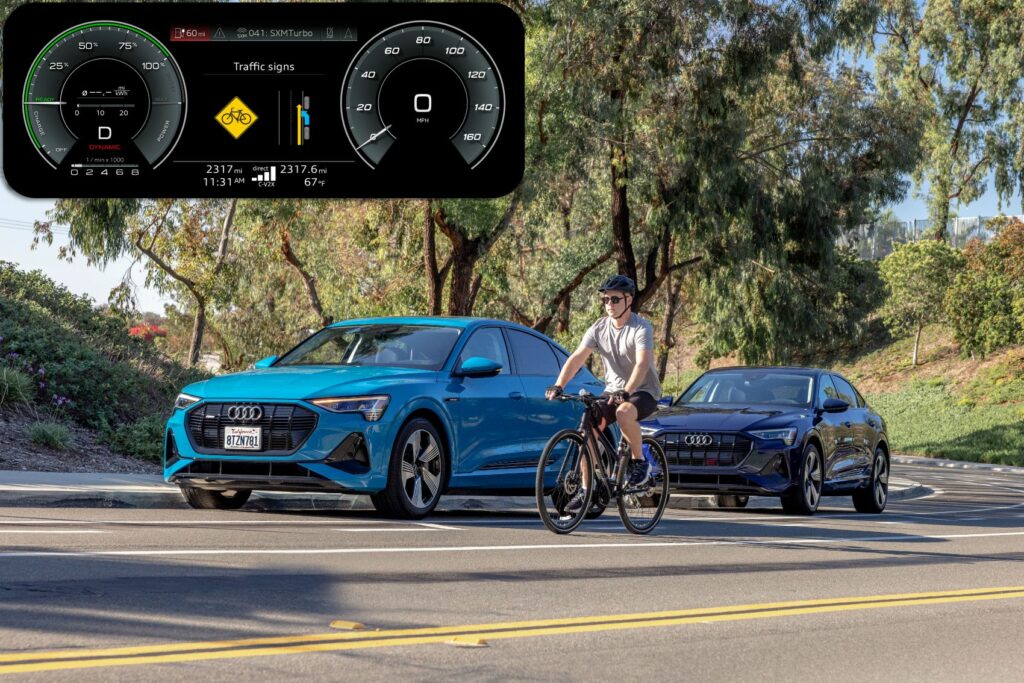
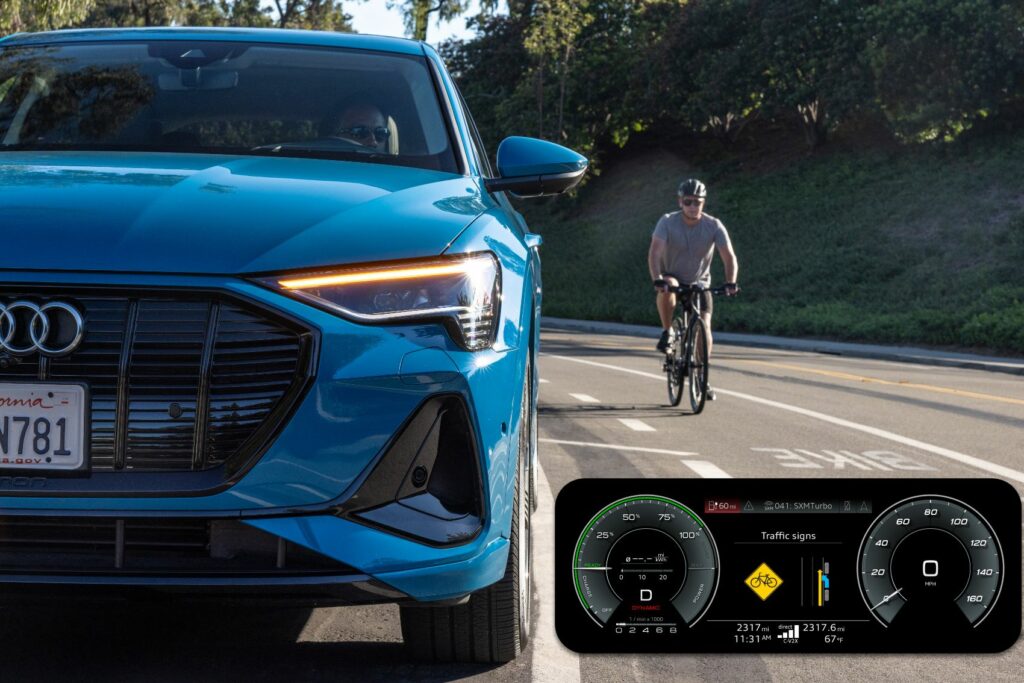
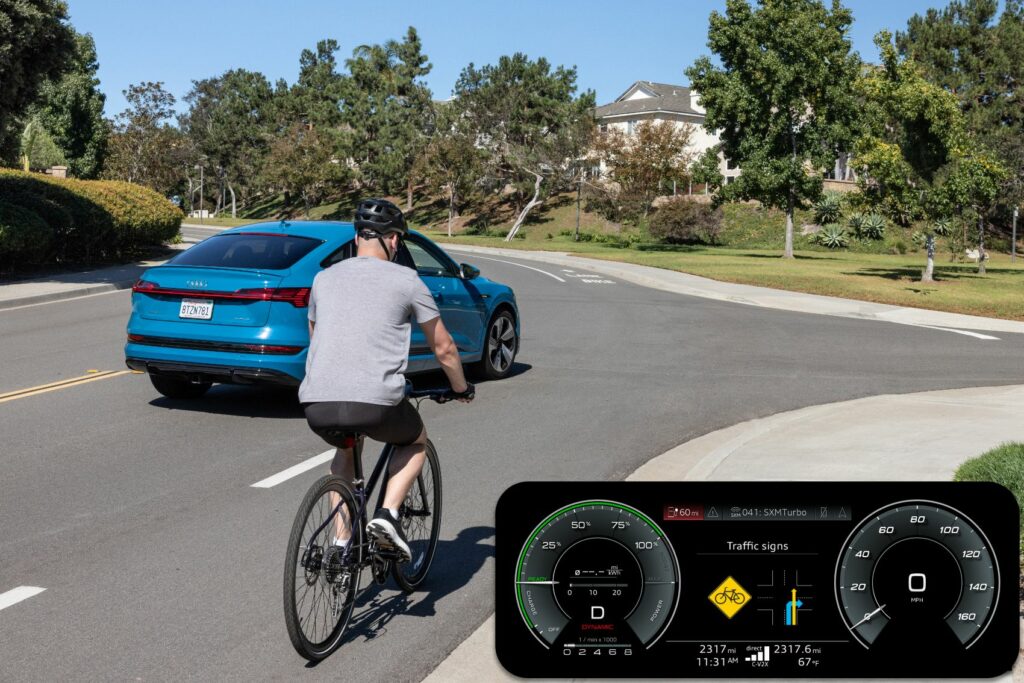
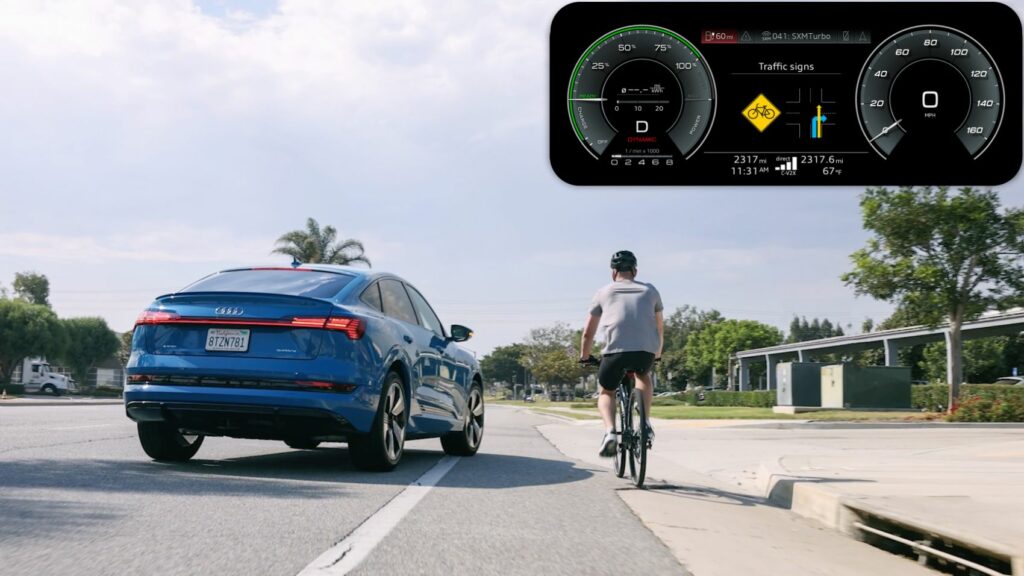
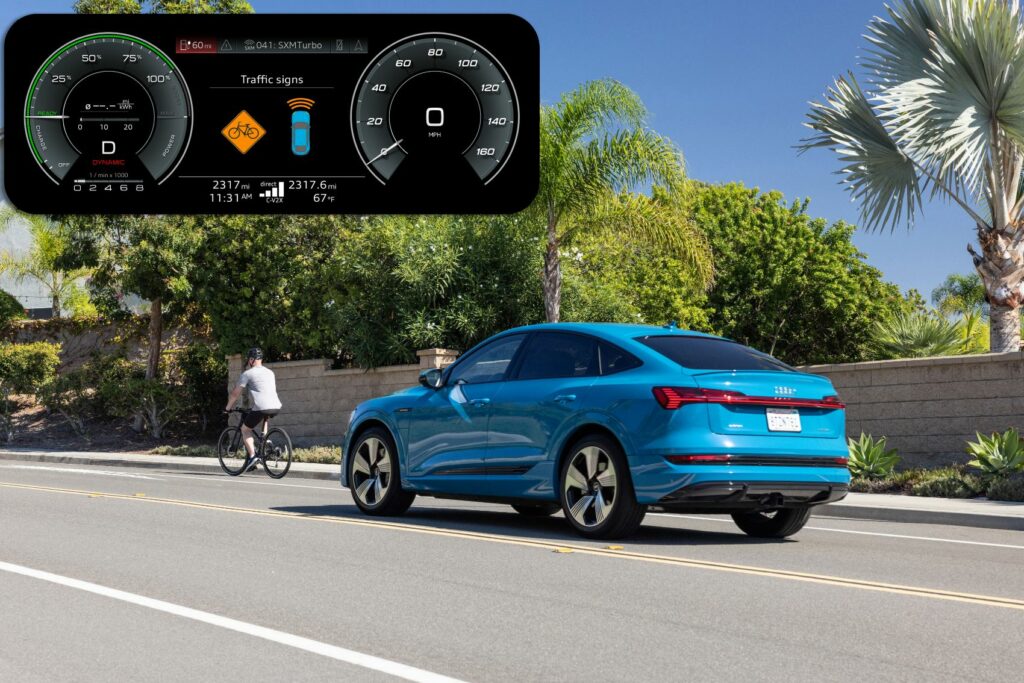
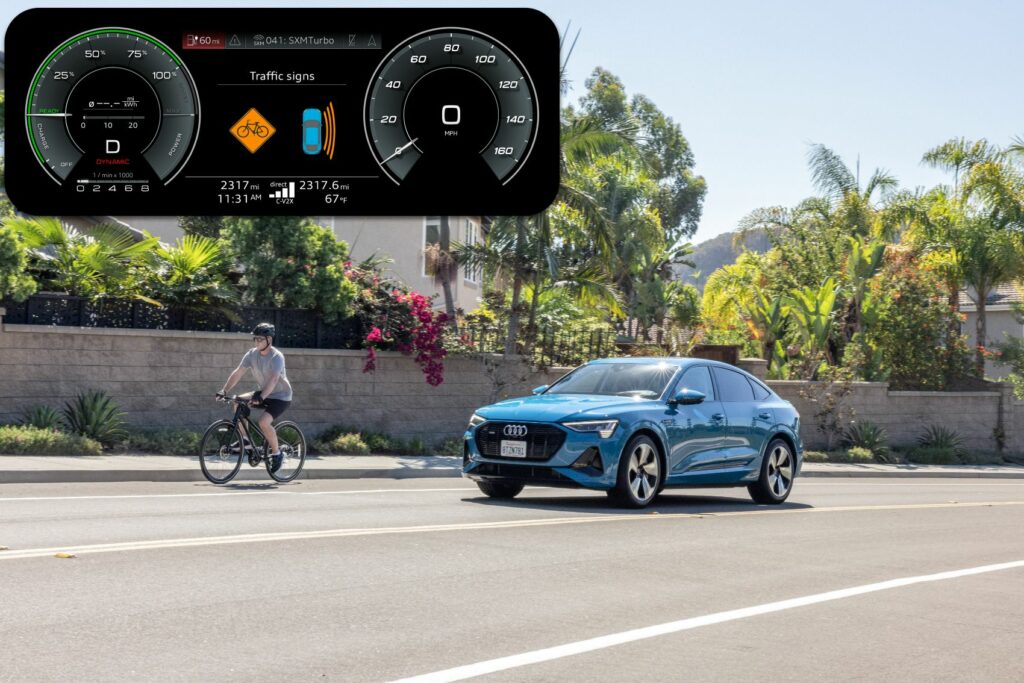
Cyclists & The V2X Ecosystem
Today, bicycles are not part of the V2X ecosystem, and the Coalition for Bicycle Safety wants to change that. Together, the companies hope to make it possible for V2X-equipped cars, bicycles, and other road participants to recognize each other and create mutual awareness.
According to Audi estimates gleaned from their research and publicly available data, provided in their news release on the Coalition for Cyclist Safety, there will be 5.3 million vehicles, work zones, railway crossings, bicycles, and other devices capable of connecting using C-V2X by 2025. Audi believes that by 2030, these numbers could increase to 61 million connected devices, including as many as 20,000 crosswalks, 60,000 school zones, 216,000 school buses, and 45 million smartphones.
“It is time we moved past the question of whether we should deploy this life-saving technology or who should go first,” said Jarrett Wendt, CEO of Spoke. “We are focused on how we do so together, with intentionality and at scale.”
“The roadmap to help save lives is clear, and Audi’s commitment to deploying C-V2X connectivity is an investment in the future of our transportation ecosystem,” added Brad Stertz, Director of Audi Government Affairs. “Our participation in the Coalition for Cyclist Safety will help accelerate that objective.”
Advisory Committee & Objectives
The Coalition for Cyclist Safety has an Advisory Committee that includes ITS America, League of American Bicyclists, People for Bikes, and The Governors Highway Safety Association.
In addition, it intends to cooperate with regulators and infrastructure operators at varying governmental levels to ensure the guidelines for V2X deployment are clear and that relevant infrastructure requirements are met. They also advocate for cyclists to be included in V2X developments and plan to work closely with other representatives of bicycle and eBike interest groups. “The Coalition for Cyclist Safety is making the significant commitment to deploy VRU connected technologies in bicycles and vehicles, along with local government partners,” Wendt said.
The Coalition’s mission aligns with the U.S. Federal Highway Administration, which announced a $40 million grant opportunity in October 2023 (the grant is called Saving Lives with Connectivity: Accelerating V2X Deployment). According to the USDOT, this grant opportunity will promote the deployment of V2X technologies with the goal of advancing the full lifesaving potential of V2X communication. Meanwhile, it will ensure connected technologies communicate securely and without harmful interference across various devices and platforms.
“We can and must use all the tools at our disposal to reduce the devastating loss of life on our nation’s roadways, and technology has a big role to play in that effort,” said Pete Buttigieg, U.S. Transportation Secretary. “Connected vehicle technology has the potential to save lives, and we are proud to provide this funding to help accelerate its development.”
The Sooner, The Better
It’s important to note that just as crash outcomes for cyclists worsened in the period spanning 2012 to 2021, so too did crash outcomes for pedestrians. On average, 76,000 pedestrians were killed or injured yearly, with pedestrian deaths up 53.6 percent and injuries down 20.4 percent from 2012 to 2021 (NHTSA Pedestrian Crash Stats, 2021). Thus, 125,000 vulnerable road users per year were impacted by traffic crashes in the U.S. during that timeframe.
The effects of a cycling or pedestrian traffic crash can last a lifetime, impacting not just the injured but often family members who care for them. I once met a 35-year-old man who was hit by a car when he was a child. As he crossed a driveway, a car turned right and hit him, knocking him off his bicycle. Over the years, he has had countless surgeries and still cannot walk unassisted or move well enough to care for himself. His mother is his primary caretaker, and neither can work due to his constant needs.
With the Coalition for Cyclist Safety and the USDOT focusing on leveraging vehicle-to-everything technology to improve driver awareness, there’s good reason to hope the statistics on cyclist and pedestrian crash outcomes will improve. The sooner, the better.
The Coalition for Cyclist Safety is inviting other companies to join. Email info@coalitionforcyclistsafety.org for more information.


